Menstrual Cycle
The menstrual cycle is a natural process that occurs in females of reproductive age. It is a complex, coordinated series of events that prepares the body for potential pregnancy each month.
Phases of the Menstrual Cycle
The menstrual cycle can be divided into four main phases:
- Menstrual Phase: This phase marks the beginning of the cycle and is characterized by the shedding of the uterine lining, resulting in menstrual bleeding. It typically lasts for 3-7 days.
- Follicular Phase: This phase begins after the menstrual phase and involves the development of ovarian follicles in the ovaries. Follicle-stimulating hormone (FSH) stimulates the growth of follicles, each containing an immature egg.
- Ovulation: Around the middle of the menstrual cycle, typically around day 14 in a 28-day cycle, a surge in luteinizing hormone (LH) triggers the release of a mature egg from the ovary. This is known as ovulation.
- Luteal Phase: Following ovulation, the luteal phase begins. The ruptured follicle develops into a structure called the corpus luteum, which secretes progesterone to prepare the uterine lining for potential implantation of a fertilized egg. If fertilization does not occur, the corpus luteum degenerates, leading to a decrease in progesterone and the start of a new menstrual cycle.
Hormonal Regulation
The menstrual cycle is regulated by a complex interplay of hormones, including:
- Estrogen: Produced primarily by the developing ovarian follicles, estrogen helps stimulate the growth of the uterine lining during the follicular phase.
- Progesterone: Secreted by the corpus luteum during the luteal phase, progesterone helps maintain the uterine lining and supports early pregnancy if fertilization occurs.
- Follicle-Stimulating Hormone (FSH): Secreted by the pituitary gland, FSH stimulates the growth of ovarian follicles at the beginning of the menstrual cycle.
- Luteinizing Hormone (LH): Also produced by the pituitary gland, LH triggers ovulation and the development of the corpus luteum.
Study Guide
When studying the menstrual cycle, be sure to focus on the following key points:
- Understand the four main phases of the menstrual cycle: menstrual, follicular, ovulation, and luteal.
- Memorize the key hormones involved in regulating the menstrual cycle and their respective roles.
- Be able to describe the events that occur in the ovaries, uterus, and hormonal levels during each phase of the cycle.
- Understand the potential impact of the menstrual cycle on fertility and reproductive health.
By mastering these concepts, you will have a solid understanding of the menstrual cycle and its importance in the reproductive system.
.◂Biology Worksheets and Study Guides High School. Human biology II
Worksheet/Answer key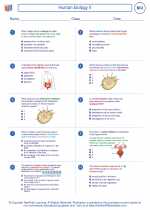 Human biology II
Human biology II  Worksheet/Answer key
Worksheet/Answer key Human biology II
Human biology II  Worksheet/Answer key
Worksheet/Answer key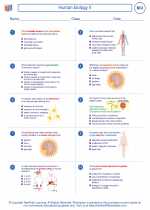 Human biology II
Human biology II  Vocabulary/Answer key
Vocabulary/Answer key Human biology II
Human biology II  Vocabulary/Answer key
Vocabulary/Answer key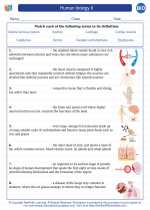 Human biology II
Human biology II  Vocabulary/Answer key
Vocabulary/Answer key Human biology II
Human biology II  Vocabulary/Answer key
Vocabulary/Answer key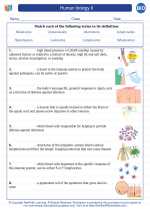 Human biology II
Human biology II  Vocabulary/Answer key
Vocabulary/Answer key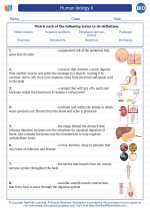 Human biology II
Human biology II  Vocabulary/Answer key
Vocabulary/Answer key Human biology II
Human biology II  Vocabulary/Answer key
Vocabulary/Answer key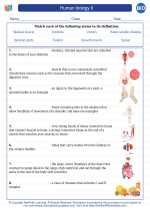 Human biology II
Human biology II 

 Worksheet/Answer key
Worksheet/Answer key
 Worksheet/Answer key
Worksheet/Answer key
 Vocabulary/Answer key
Vocabulary/Answer key
 Vocabulary/Answer key
Vocabulary/Answer key
 Vocabulary/Answer key
Vocabulary/Answer key
 Vocabulary/Answer key
Vocabulary/Answer key
 Vocabulary/Answer key
Vocabulary/Answer key
 Vocabulary/Answer key
Vocabulary/Answer key
 Vocabulary/Answer key
Vocabulary/Answer key

The resources above cover the following skills:
LIFE SCIENCE (NGSS)
From Molecules to Organisms: Structures and Processes
Students who demonstrate understanding can:
Develop and use a model to illustrate the hierarchical organization of interacting systems that provide specific functions within multicellular organisms.
Plan and conduct an investigation to provide evidence that feedback mechanisms maintain homeostasis.